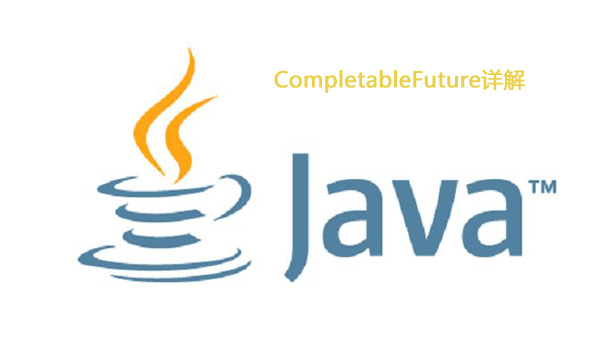Java CompletableFuture詳解
在Java 8中, 新增加了一個包含50個方法左右的類: CompletableFuture,默認依靠fork/join框架啟動新的線程實現異步與并發的,提供了非常強大的Future的擴展功能,可以幫助我們簡化異步編程的復雜性,提供了函數式編程的能力,可以通過回調的方式處理計算結果,并且提供了轉換和組合CompletableFuture的方法。
CompletableFuture類實現了CompletionStage和Future接口,所以可以像以前一樣通過阻塞或者輪詢的方式獲得結果,盡管這種方式不推薦使用。
創建CompletableFuture對象。
以下四個靜態方法用來為一段異步執行的代碼創建CompletableFuture對象:
- public static CompletableFuture<Void> runAsync(Runnable runnable)
- public static CompletableFuture<Void> runAsync(Runnable runnable, Executor executor)
- public static <U> CompletableFuture<U> supplyAsync(Supplier<U> supplier)
- public static <U> CompletableFuture<U> supplyAsync(Supplier<U> supplier, Executor executor)
runAsync方法也好理解,它以Runnable函數式接口類型為參數,所以CompletableFuture的計算結果為空。以Async結尾會使用其它的線程去執行,沒有指定Executor的方法會使用ForkJoinPool.commonPool()作為它的線程池執行異步代碼。
supplyAsync方法以Supplier<U>函數式接口類型為參數,CompletableFuture的計算結果類型為U。
因為方法的參數類型都是函數式接口,所以可以使用lambda表達式實現異步任務,比如:
- CompletableFuture<String> future = CompletableFuture.supplyAsync(() -> {
- //長時間的計算任務
- return "hello world";
- });
計算結果完成時的處理
當CompletableFuture的計算結果完成,或者拋出異常的時候,我們可以執行特定的Action。主要是下面的方法:
- public CompletableFuture<T> whenComplete(BiConsumer<? super T,? super Throwable> action)
- public CompletableFuture<T> whenCompleteAsync(BiConsumer<? super T,? super Throwable> action)
- public CompletableFuture<T> whenCompleteAsync(BiConsumer<? super T,? super Throwable> action, Executor executor)
- public CompletableFuture<T> exceptionally(Function<Throwable,? extends T> fn)
可以看到Action的類型是BiConsumer<? super T,? super Throwable>,它可以處理正常的計算結果,或者異常情況。
注意這幾個方法都會返回CompletableFuture,當Action執行完畢后它的結果返回原始的CompletableFuture的計算結果或者返回異常。
- public class Main {
- private static Random rand = new Random();
- private static long t = System.currentTimeMillis();
- static int getMoreData() {
- System.out.println("begin to start compute");
- try {
- Thread.sleep(10000);
- } catch (InterruptedException e) {
- throw new RuntimeException(e);
- }
- System.out.println("end to start compute. passed " + (System.currentTimeMillis() - t)/1000 + " seconds");
- return rand.nextInt(1000);
- }
- public static void main(String[] args) throws Exception {
- CompletableFuture<Integer> future = CompletableFuture.supplyAsync(Main::getMoreData);
- Future<Integer> f = future.whenComplete((v, e) -> {
- System.out.println(v);
- System.out.println(e);
- });
- System.out.println(f.get());
- System.in.read();
- }
- }
exceptionally方法返回一個新的CompletableFuture,當原始的CompletableFuture拋出異常的時候,就會觸發這個CompletableFuture的計算,調用function計算值,否則如果原始的CompletableFuture正常計算完后,這個新的CompletableFuture也計算完成,它的值和原始的CompletableFuture的計算的值相同。也就是這個exceptionally方法用來處理異常的情況。
結果轉換
由于回調風格的實現,我們不必因為等待一個計算完成而阻塞著調用線程,而是告訴CompletableFuture當計算完成的時候請執行某個function。而且我們還可以將這些操作串聯起來,或者將CompletableFuture組合起來。
- public <U> CompletableFuture<U> thenApply(Function<? super T,? extends U> fn)
- public <U> CompletableFuture<U> thenApplyAsync(Function<? super T,? extends U> fn)
- public <U> CompletableFuture<U> thenApplyAsync(Function<? super T,? extends U> fn, Executor executor)
這一組函數的功能是當原來的CompletableFuture計算完后,將結果傳遞給函數fn,將fn的結果作為新的CompletableFuture計算結果。因此它的功能相當于將CompletableFuture<T>轉換成CompletableFuture<U>。
使用例子如下:
- CompletableFuture<Integer> future = CompletableFuture.supplyAsync(() -> {
- return 100;
- });
- CompletableFuture<String> f = future.thenApplyAsync(i -> i * 10).thenApply(i -> i.toString());
- System.out.println(f.get()); //"1000"
需要注意的是,這些轉換并不是馬上執行的,也不會阻塞,而是在前一個stage完成后繼續執行。
下面一組方法雖然也返回CompletableFuture對象,但是對象的值和原來的CompletableFuture計算的值不同。當原先的CompletableFuture的值計算完成或者拋出異常的時候,會觸發這個CompletableFuture對象的計算,結果由BiFunction參數計算而得。因此這組方法兼有whenComplete和轉換的兩個功能。
- public <U> CompletableFuture<U> handle(BiFunction<? super T,Throwable,? extends U> fn)
- public <U> CompletableFuture<U> handleAsync(BiFunction<? super T,Throwable,? extends U> fn)
- public <U> CompletableFuture<U> handleAsync(BiFunction<? super T,Throwable,? extends U> fn, Executor executor)
它們與thenApply* 方法的區別在于handle*方法會處理正常計算值和異常,因此它可以屏蔽異常,避免異常繼續拋出。而thenApply*方法只是用來處理正常值,因此一旦有異常就會拋出。
純消費結果
上面的方法是當計算完成的時候,會生成新的計算結果(thenApply, handle),或者返回同樣的計算結果(whenComplete,CompletableFuture)。CompletableFuture提供了一種處理結果的方法,只對結果執行Action,而不返回新的計算值,因此計算值為Void:
- public CompletableFuture<Void> thenAccept(Consumer<? super T> action)
- public CompletableFuture<Void> thenAcceptAsync(Consumer<? super T> action)
- public CompletableFuture<Void> thenAcceptAsync(Consumer<? super T> action, Executor executor)
看它的參數類型也就明白了,它們是消費型函數式接口Consumer,這個接口只有輸入,沒有返回值。
- CompletableFuture<Integer> future = CompletableFuture.supplyAsync(() -> {
- return 100;
- });
- CompletableFuture<Void> f = future.thenAccept(System.out::println);
- System.out.println(f.get());
- public <U> CompletableFuture<Void> thenAcceptBoth(CompletionStage<? extends U> other, BiConsumer<? super T,? super U> action)
- public <U> CompletableFuture<Void> thenAcceptBothAsync(CompletionStage<? extends U> other, BiConsumer<? super T,? super U> action)
- public <U> CompletableFuture<Void> thenAcceptBothAsync(CompletionStage<? extends U> other, BiConsumer<? super T,? super U> action, Executor executor)
- public CompletableFuture<Void> runAfterBoth(CompletionStage<?> other, Runnable action)
thenAcceptBoth以及相關方法提供了類似的功能,當兩個CompletionStage都正常完成計算的時候,就會執行提供的action,它用來組合另外一個異步的結果。
runAfterBoth是當兩個CompletionStage都正常完成計算的時候,執行一個Runnable,這個Runnable并不使用計算的結果。
例子如下:
- CompletableFuture<Integer> future = CompletableFuture.supplyAsync(() -> {
- return 100;
- });
- CompletableFuture<Void> f = future.thenAcceptBoth(CompletableFuture.completedFuture(10), (x, y) -> System.out.println(x * y));
- System.out.println(f.get());
更徹底地,下面一組方法當計算完成的時候會執行一個Runnable,與thenAccept不同,Runnable并不使用CompletableFuture計算的結果。
- public CompletableFuture<Void> thenRun(Runnable action)
- public CompletableFuture<Void> thenRunAsync(Runnable action)
- public CompletableFuture<Void> thenRunAsync(Runnable action, Executor executor)
因此先前的CompletableFuture計算的結果被忽略了,這個方法返回CompletableFuture<Void>類型的對象。
- CompletableFuture<Integer> future = CompletableFuture.supplyAsync(() -> {
- return 100;
- });
- CompletableFuture<Void> f = future.thenRun(() -> System.out.println("finished"));
- System.out.println(f.get());
因此,你可以根據方法的參數的類型來加速你的記憶。Runnable類型的參數會忽略計算的結果,Consumer是純消費計算結果,BiConsumer會組合另外一個CompletionStage純消費,Function會對計算結果做轉換,BiFunction會組合另外一個CompletionStage的計算結果做轉換。
組合
有時,你需要在一個future結構運行某個函數,但是這個函數也是返回某種future,也就是說是兩個future彼此依賴串聯在一起,它類似于flatMap。
- public <U> CompletableFuture<U> thenCompose(Function<? super T,? extends CompletionStage<U>> fn)
- public <U> CompletableFuture<U> thenComposeAsync(Function<? super T,? extends CompletionStage<U>> fn)
- public <U> CompletableFuture<U> thenComposeAsync(Function<? super T,? extends CompletionStage<U>> fn, Executor executor)
這一組方法接受一個Function作為參數,這個Function的輸入是當前的CompletableFuture的計算值,返回結果將是一個新的CompletableFuture,這個新的CompletableFuture會組合原來的CompletableFuture和函數返回的CompletableFuture。因此它的功能類似:
A +--> B +---> C
記住,thenCompose返回的對象并不一是函數fn返回的對象,如果原來的CompletableFuture還沒有計算出來,它就會生成一個新的組合后的CompletableFuture。
例子:
- CompletableFuture<Integer> future = CompletableFuture.supplyAsync(() -> {
- return 100;
- });
- CompletableFuture<String> f = future.thenCompose( i -> {
- return CompletableFuture.supplyAsync(() -> {
- return (i * 10) + "";
- });
- });
- System.out.println(f.get()); //1000
而下面的一組方法thenCombine用來復合另外一個CompletionStage的結果。它的功能類似:
A +
|
+------> C
+------^
B +
兩個CompletionStage是并行執行的,它們之間并沒有先后依賴順序,other并不會等待先前的CompletableFuture執行完畢后再執行。
- public <U,V> CompletableFuture<V> thenCombine(CompletionStage<? extends U> other, BiFunction<? super T,? super U,? extends V> fn)
- public <U,V> CompletableFuture<V> thenCombineAsync(CompletionStage<? extends U> other, BiFunction<? super T,? super U,? extends V> fn)
- public <U,V> CompletableFuture<V> thenCombineAsync(CompletionStage<? extends U> other, BiFunction<? super T,? super U,? extends V> fn, Executor executor)
其實從功能上來講,它們的功能更類似thenAcceptBoth,只不過thenAcceptBoth是純消費,它的函數參數沒有返回值,而thenCombine的函數參數fn有返回值。
- CompletableFuture<Integer> future = CompletableFuture.supplyAsync(() -> {
- return 100;
- });
- CompletableFuture<String> future2 = CompletableFuture.supplyAsync(() -> {
- return "abc";
- });
- CompletableFuture<String> f = future.thenCombine(future2, (x,y) -> y + "-" + x);
- System.out.println(f.get()); //abc-100
Either
thenAcceptBoth和runAfterBoth是當兩個CompletableFuture都計算完成,而我們下面要了解的方法是當任意一個CompletableFuture計算完成的時候就會執行。
- public CompletableFuture<Void> acceptEither(CompletionStage<? extends T> other, Consumer<? super T> action)
- public CompletableFuture<Void> acceptEitherAsync(CompletionStage<? extends T> other, Consumer<? super T> action)
- public CompletableFuture<Void> acceptEitherAsync(CompletionStage<? extends T> other, Consumer<? super T> action, Executor executor)
- public <U> CompletableFuture<U> applyToEither(CompletionStage<? extends T> other, Function<? super T,U> fn)
- public <U> CompletableFuture<U> applyToEitherAsync(CompletionStage<? extends T> other, Function<? super T,U> fn)
- public <U> CompletableFuture<U> applyToEitherAsync(CompletionStage<? extends T> other, Function<? super T,U> fn, Executor executor)
acceptEither方法是當任意一個CompletionStage完成的時候,action這個消費者就會被執行。這個方法返回CompletableFuture<Void>
applyToEither方法是當任意一個CompletionStage完成的時候,fn會被執行,它的返回值會當作新的CompletableFuture<U>的計算結果。
下面這個例子有時會輸出100,有時候會輸出200,哪個Future先完成就會根據它的結果計算。
- Random rand = new Random();
- CompletableFuture<Integer> future = CompletableFuture.supplyAsync(() -> {
- try {
- Thread.sleep(10000 + rand.nextInt(1000));
- } catch (InterruptedException e) {
- e.printStackTrace();
- }
- return 100;
- });
- CompletableFuture<Integer> future2 = CompletableFuture.supplyAsync(() -> {
- try {
- Thread.sleep(10000 + rand.nextInt(1000));
- } catch (InterruptedException e) {
- e.printStackTrace();
- }
- return 200;
- });
- CompletableFuture<String> f = future.applyToEither(future2,i -> i.toString());
輔助方法 allOf 和 anyOf
前面我們已經介紹了幾個靜態方法:completedFuture、runAsync、supplyAsync,下面介紹的這兩個方法用來組合多個CompletableFuture。
- public static CompletableFuture<Void> allOf(CompletableFuture<?>... cfs)
- public static CompletableFuture<Object> anyOf(CompletableFuture<?>... cfs)
allOf方法是當所有的CompletableFuture都執行完后執行計算。
anyOf方法是當任意一個CompletableFuture執行完后就會執行計算,計算的結果相同。
下面的代碼運行結果有時是100,有時是"abc"。但是anyOf和applyToEither不同。anyOf接受任意多的CompletableFuture,但是applyToEither只是判斷兩個CompletableFuture。anyOf返回值的計算結果是參數中其中一個CompletableFuture的計算結果,applyToEither返回值的計算結果卻是要經過fn處理的。當然還有靜態方法的區別,線程池的選擇等。
- Random rand = new Random();
- CompletableFuture<Integer> future1 = CompletableFuture.supplyAsync(() -> {
- try {
- Thread.sleep(10000 + rand.nextInt(1000));
- } catch (InterruptedException e) {
- e.printStackTrace();
- }
- return 100;
- });
- CompletableFuture<String> future2 = CompletableFuture.supplyAsync(() -> {
- try {
- Thread.sleep(10000 + rand.nextInt(1000));
- } catch (InterruptedException e) {
- e.printStackTrace();
- }
- return "abc";
- });
- //CompletableFuture<Void> f = CompletableFuture.allOf(future1,future2);
- CompletableFuture<Object> f = CompletableFuture.anyOf(future1,future2);
- System.out.println(f.get());
更進一步
Guava的Future類,它的Futures輔助類提供了很多便利方法,用來處理多個Future,而不像Java的CompletableFuture,只提供了allOf、anyOf兩個方法。 比如有這樣一個需求,將多個CompletableFuture組合成一個CompletableFuture,這個組合后的CompletableFuture的計算結果是個List,它包含前面所有的CompletableFuture的計算結果,guava的Futures.allAsList可以實現這樣的功能,但是對于java CompletableFuture,我們需要一些輔助方法:
- public static <T> CompletableFuture<List<T>> sequence(List<CompletableFuture<T>> futures) {
- CompletableFuture<Void> allDoneFuture = CompletableFuture.allOf(futures.toArray(new CompletableFuture[futures.size()]));
- return allDoneFuture.thenApply(v -> futures.stream().map(CompletableFuture::join).collect(Collectors.<T>toList()));
- }
- public static <T> CompletableFuture<Stream<T>> sequence(Stream<CompletableFuture<T>> futures) {
- List<CompletableFuture<T>> futureList = futures.filter(f -> f != null).collect(Collectors.toList());
- return sequence(futureList);
- }
或者Java Future轉CompletableFuture:
- public static <T> CompletableFuture<T> toCompletable(Future<T> future, Executor executor) {
- return CompletableFuture.supplyAsync(() -> {
- try {
- return future.get();
- } catch (InterruptedException | ExecutionException e) {
- throw new RuntimeException(e);
- }
- }, executor);
- }







































